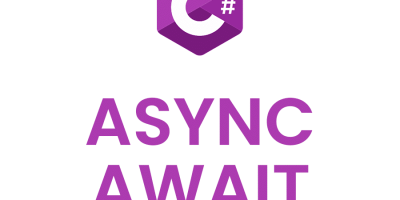Introduction:
Choosing the right technology stack is crucial when building enterprise-level applications. These applications require robustness, scalability, maintainability, and performance to support complex business needs. Angular 2+ has emerged as a top choice for developing enterprise-level solutions due to its advanced features, modular structure, and strong ecosystem. In this article, we will explore the key benefits of using Angular 2+ for building large-scale applications, focusing on how it meets the demands of modern enterprises.
1. Scalability and Modularity:
Enterprise applications tend to grow and evolve over time, requiring scalable architecture. Angular 2+ introduces a component-based architecture, which is inherently modular. This modularity allows developers to break down the application into smaller, manageable pieces that can be individually developed, tested, and maintained.
How Angular Supports Scalability:
- Lazy Loading: Angular 2+ supports lazy loading, meaning you can load only the required parts of the application when needed. This improves initial load time, making even large applications feel responsive. For enterprise applications, which often contain numerous modules and routes, lazy loading ensures efficient use of resources.
- NgModules: Angular’s NgModules allow you to group components, services, and directives into cohesive blocks. This modular approach promotes code reuse and makes it easier to maintain different sections of the application independently. Teams can focus on specific modules, and when new features are needed, they can be developed as separate modules, ensuring scalability.
- Code Splitting: The framework also supports code splitting, enabling you to break your application into smaller bundles. This is especially useful for large, enterprise applications, as it allows the user to download only the necessary parts of the app at any given time.
2. Robust Tooling for Developer Productivity:
For enterprise-level development, tools that improve productivity, maintainability, and consistency across teams are vital. Angular 2+ provides a powerful set of tools that streamline the development workflow:
- Angular CLI (Command Line Interface): The Angular CLI is one of the most robust features of Angular 2+. It automates many development tasks, such as scaffolding components, services, and modules, configuring build processes, and running tests. The CLI enforces best practices by generating code that adheres to Angular standards, ensuring that large teams follow the same structure and conventions.
- Built-in Testing Tools: Enterprise applications demand high reliability, which means comprehensive testing is essential. Angular 2+ integrates with testing frameworks like Jasmine and Karma for unit tests and Protractor for end-to-end tests. TestBed, a built-in Angular testing utility, makes it easy to isolate components and services for testing, ensuring that individual units of the application are functioning correctly.
- Development Tools: The framework is compatible with various IDEs, including Visual Studio Code, WebStorm, and Sublime Text, all of which have rich Angular support. These tools provide features like syntax highlighting, auto-completion, and integrated debugging, improving development speed and reducing errors.
3. Maintainability Through TypeScript:
Maintainability is a critical factor in enterprise applications, which often require years of support, updates, and new features. Angular 2+ is built using TypeScript, a superset of JavaScript that provides static typing, classes, interfaces, and other object-oriented features. This results in more maintainable, predictable codebases, especially for large teams working on complex applications.
Advantages of TypeScript:
- Type Safety: TypeScript’s static typing helps developers catch errors early during development. In large applications, where multiple teams contribute to the same codebase, type safety ensures that contracts between different parts of the application are maintained.
- Refactoring: The structured nature of TypeScript makes refactoring easier and safer. In enterprise projects, refactoring is often needed as new features are added, or architectural changes are required. TypeScript’s tooling helps ensure that changes do not introduce breaking errors into the code.
- Better Documentation: Type annotations in TypeScript serve as implicit documentation, making it easier for developers new to the project to understand the expected types and structures. This is crucial for enterprise applications where onboarding new team members can be challenging due to the complexity of the codebase.
4. Performance Optimization for Large-Scale Apps:
Performance is a key factor for enterprise applications, which often have large user bases and complex functionalities. Angular 2+ includes several built-in features that ensure applications remain performant, even as they scale.
- Ahead-of-Time (AOT) Compilation: AOT compilation is one of Angular 2+’s core features. Unlike Just-in-Time (JIT) compilation, which compiles the application at runtime, AOT compiles the application during the build process. This reduces the app’s initial load time and makes it more efficient by eliminating the need for the browser to compile the code at runtime.
- OnPush Change Detection: Angular’s default change detection can be expensive in large applications, as it checks every component for changes on each cycle. With the OnPush change detection strategy, developers can manually control when the framework checks for changes, improving performance by reducing unnecessary checks.
- TrackBy in ngFor Loops: For enterprise-level applications that render large lists or tables, performance can suffer if Angular constantly re-renders the DOM. The TrackBy function in Angular 2+ allows developers to specify how Angular tracks and updates items in an ngFor loop, leading to more efficient DOM updates and reducing unnecessary re-rendering.
5. Extensive Ecosystem and Community Support:
One of the reasons Angular 2+ is ideal for enterprise applications is its extensive ecosystem and strong community support. This includes a large collection of third-party libraries, tools, and components that can be easily integrated into your application.
- Angular Material and Other UI Libraries: For enterprise applications, consistency in UI/UX is essential. Angular Material provides a comprehensive set of UI components that follow Google’s Material Design guidelines. This allows developers to build modern, accessible, and responsive user interfaces out of the box.
- Third-Party Integrations: Angular 2+ has seamless integration with popular libraries like NgRx (for state management), RxJS (for reactive programming), and D3.js (for data visualization). This extensibility makes it easier to add complex functionalities, such as real-time data processing, to large-scale enterprise apps.
- Active Community and Support: Angular 2+ is backed by Google, ensuring long-term support and stability. Additionally, it has an active community of developers who contribute to its ecosystem by creating plugins, tools, and tutorials. For enterprise applications that require long-term maintenance, this level of support is invaluable.
6. Cross-Platform Development:
In today’s multi-device world, enterprises often need applications that work across various platforms. Angular 2+ allows developers to build Progressive Web Apps (PWAs), mobile apps using Ionic, and even desktop applications via Electron, all using the same codebase.
Benefits of Cross-Platform Development:
- Code Reusability: Angular’s architecture allows for significant code sharing between web, mobile, and desktop platforms. This reduces development time and costs, as developers don’t need to write separate codebases for each platform.
- Consistency Across Platforms: Using a single framework for web and mobile development ensures a consistent user experience across different devices. This is particularly important for enterprise applications where branding and UI/UX consistency are critical.
Conclusion:
Angular 2+ offers a robust, scalable, and maintainable framework that is well-suited for enterprise-level applications. Its component-based architecture, TypeScript support, performance optimizations, and strong tooling make it an excellent choice for large-scale projects. Additionally, the extensive ecosystem and active community ensure that enterprises can rely on Angular for long-term support and continuous improvement. Whether you’re building a corporate dashboard, a data-driven application, or a customer-facing solution, Angular 2+ provides the tools and features needed to deliver reliable and performant software.




Leave a Reply